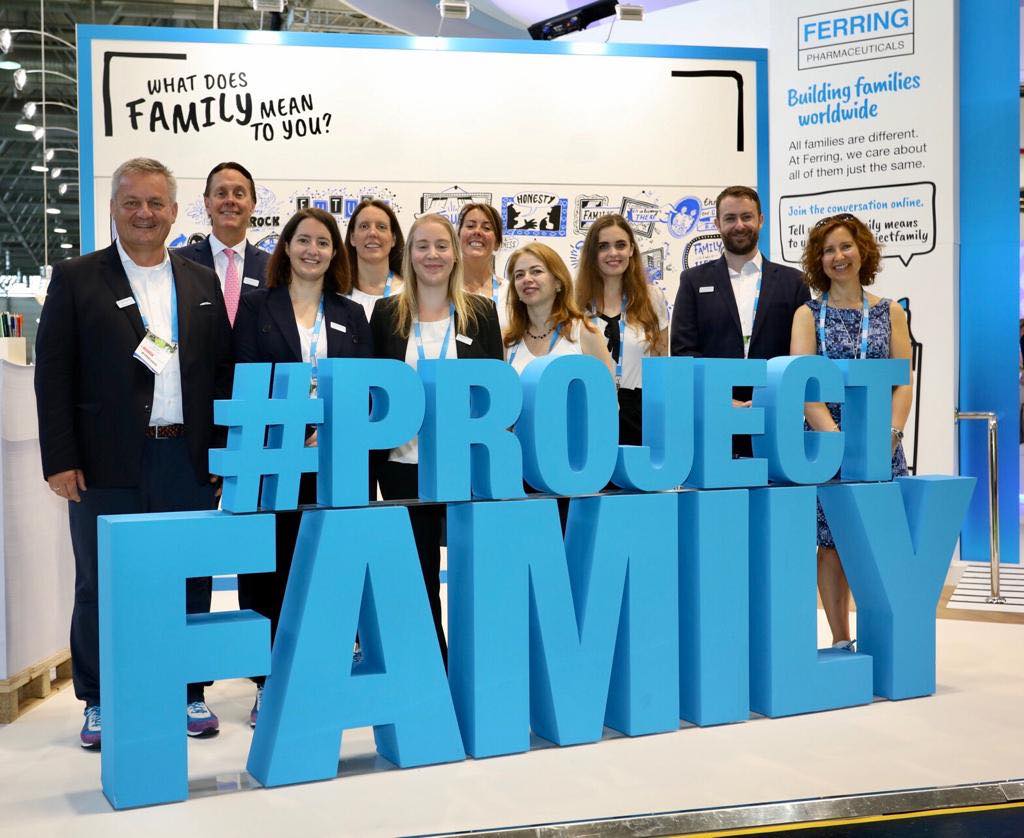
Project Family
Big families. Small families. Same sex parent families. Solo parent families. Proud to be IVF families. We believe all families are worth celebrating. At Ferring, we’re committed to building healthy families of every shape and size.
Through our #projectfamily conversation, we advocate for everyone’s right to build a family, and for people all over the world to be able to access the quality care and treatments they need to build a family of their own.
From conception to birth, we want to hear your family-building story! Share online using #projectfamily, or join one of our campaigns below.
Are you #IVFandProud?
It’s over 40 years since the birth of Louise Brown, the world’s first IVF baby. Since then, techniques have improved significantly, and over 8 million babies have been born thanks to IVF.1
One thing that hasn’t improved, however, is stigma. We’ve heard from the IVF community that there’s still a real sense of shame and embarrassment surrounding fertility issues and IVF.
It shouldn’t be like this, so to support people on their path to building a family, we’ve launched #IVFandProud; a campaign committed to sharing success stories and celebrating the people and families here today thanks to IVF.
If you’ve built your family through IVF, or you’re here today because your parents did, we’d love to hear from you.
Contact projectfamily@ferring.com or visit us on Instagram or Facebook.
Preemie power
Every year, 15 million babies are born preterm.2 In spite of potential complications, many preemie babies survive and go on to thrive, often against all odds.
At Ferring, we are committed to supporting families from conception to birth, including by raising awareness of preterm birth.
If you’re a former preemie baby, your family has been affected by preterm birth, or you’re a doctor or nurse who works hard every day to give preemies the best possible start in life, we’d love to hear from you. Contact projectfamily@ferring.com or visit us on Instagram or Facebook.
Birth stories
Post-partum haemorrhage (PPH), or excessive bleeding after childbirth, is the leading direct cause of maternal mortality.3 The vast majority of maternal deaths occur in low and lower-middle income countries,4 where women often do not have access to prenatal care, skilled birth attendants or quality treatments.
At Ferring, we’re committed to reducing PPH as part of our mission to reduce maternal mortality and protect women and families around the world. We believe that every woman should have access to quality care and treatment during pregnancy and childbirth, no matter where she lives.
If you or your family have been affected by PPH, we’d love to hear from you.
Contact projectfamily@ferring.com or visit us on Instagram or Facebook.
References
- ESHRE, 2018. More than 8 million babies born from IVF since the world’s first in 1978. Available at: https://www.eshre.eu/Annual-Meeting/Barcelona-2018/ESHRE-2018-Press-releases/De-Geyter Last accessed: October 2019
- WHO Fact sheet Preterm Birth. Available at: https://www.who.int/news-room/fact-sheets/detail/preterm-birth Last accessed: October 2019.
- Say L, et al. Global causes of maternal death: a WHO systematic analysis. The Lancet Global Health. 2014; 2(6):e323-33. Available at: https://www.thelancet.com/pdfs/journals/langlo/PIIS2214-109X(14)70227-X.pdf Last accessed: October 2019.
- World Health Organization. Priority diseases and reasons for inclusion. Postpartum haemorrhage. Available at: http://www.who.int/medicines/areas/priority_medicines/Ch6_16PPH.pdf Last accessed: October

